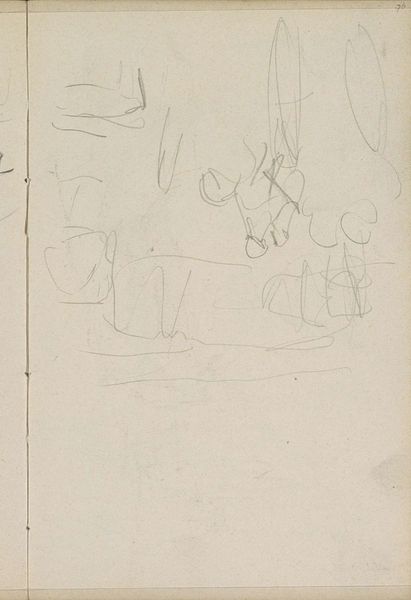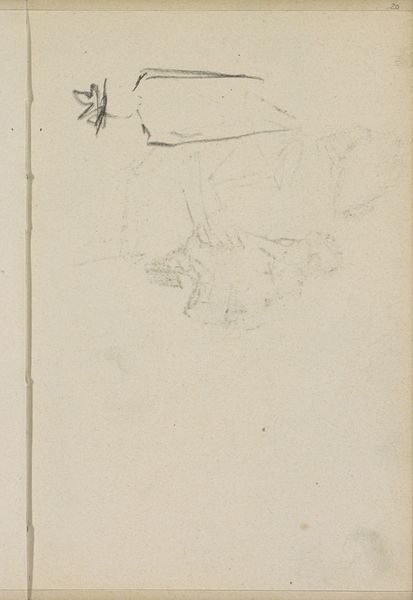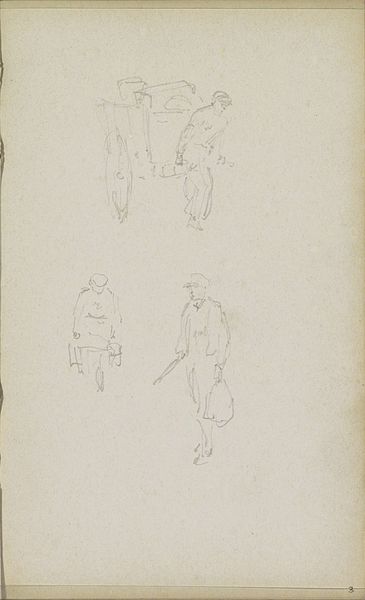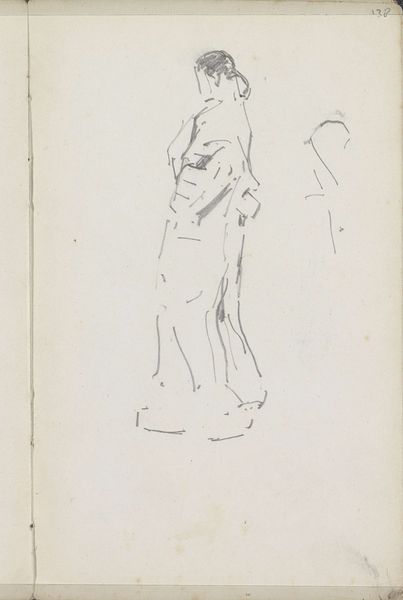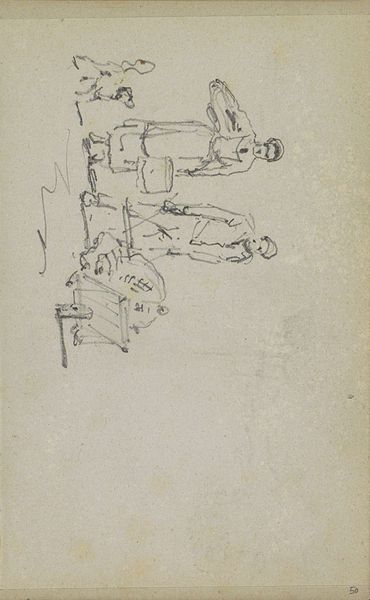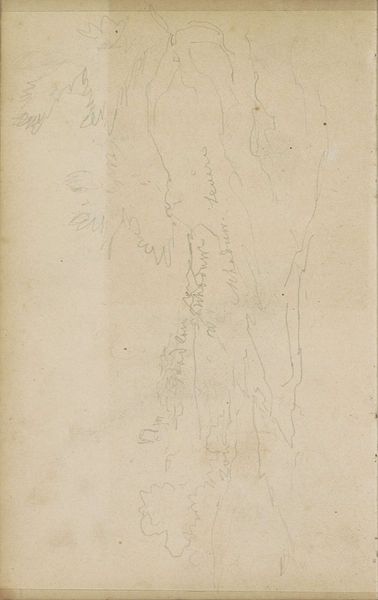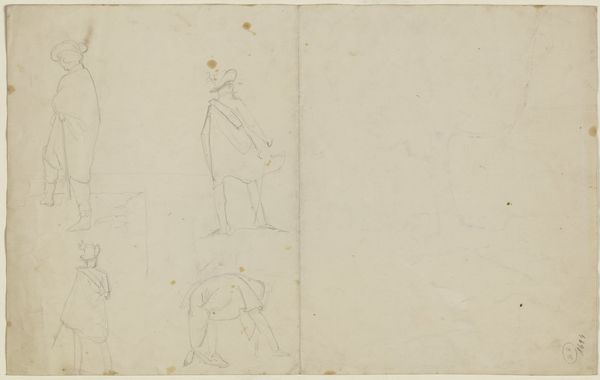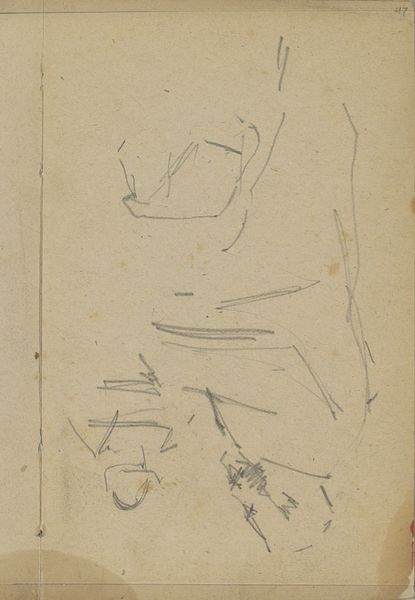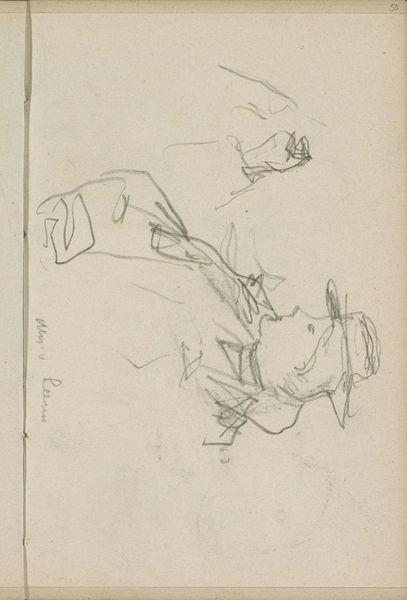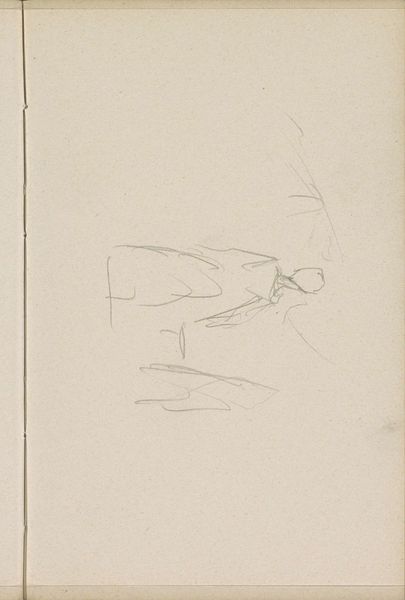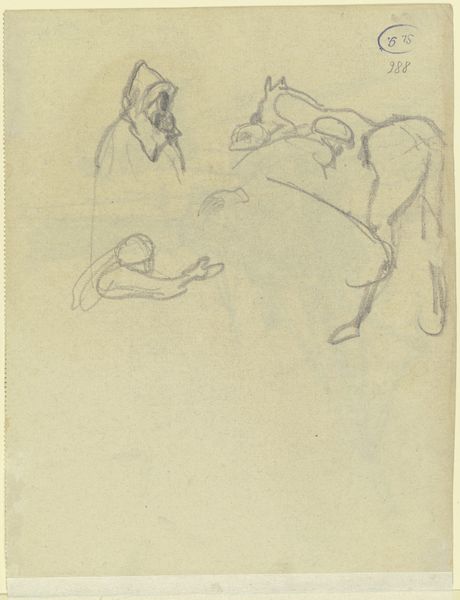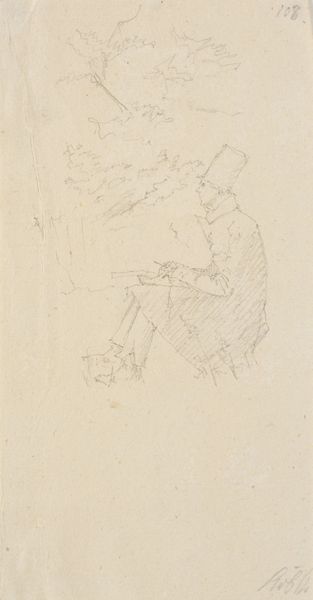
drawing, pencil
#
drawing
#
figuration
#
pencil
#
sketchbook drawing
#
genre-painting
#
realism
Copyright: Rijks Museum: Open Domain
Curator: Adrianus Eversen's pencil drawing, "Two Men with a Basket," created sometime between 1828 and 1897, offers an intimate glimpse into the everyday. It looks like a quick study. What is your first reaction? Editor: Sparse. My eye is drawn to the void; the figures are lightly sketched, almost swallowed by the blankness of the page. They appear weary, burdened by the labor they are performing. Curator: It's interesting that you see weariness. Eversen often depicted cityscapes. This falls under what some might term genre painting, turning its focus to anonymous figures performing quotidian actions. How might viewing this work influence our understanding of Eversen and this category of painting? Editor: It feels uncharacteristic of his documented output. This realism exposes the socio-economic realities affecting those outside of glamorous cityscapes, focusing on those usually erased. Are they gleaning? Curator: The function of the basket, unfortunately, remains somewhat obscure. Given the loose style, it does read as something quickly jotted down perhaps while the artist's was engaging with another scene entirely. A snapshot amid an ever changing political backdrop perhaps. Editor: I want to resist reading this work simply as a 'quick sketch'. While appearing simple, its quiet, observant realism could be considered subtly radical. Consider the time. Such seemingly unremarkable subjects were deemed worthy of attention, suggesting evolving sensitivities. It invites us to acknowledge the humanity of the working class, beyond stereotype, reflecting deeper socio-political shifts. Curator: Yes. As art reflects the ever changing dynamic and role of its people within the grander tapestry of local and global structures of all kinds. I think the quiet observation you mention encapsulates so much of this. Editor: Absolutely, it seems this modest sketch quietly reverberates with larger questions concerning the social and cultural contexts of its time. It asks: who is seen? Who is not? Curator: Indeed, it prompts considerations about visibility, representation and, of course, access. I like your analysis. It serves as a reminder that art's importance extends far beyond aesthetics and technical skill, inviting reflections of society, power and humanity's enduring questions.
Comments
No comments
Be the first to comment and join the conversation on the ultimate creative platform.
